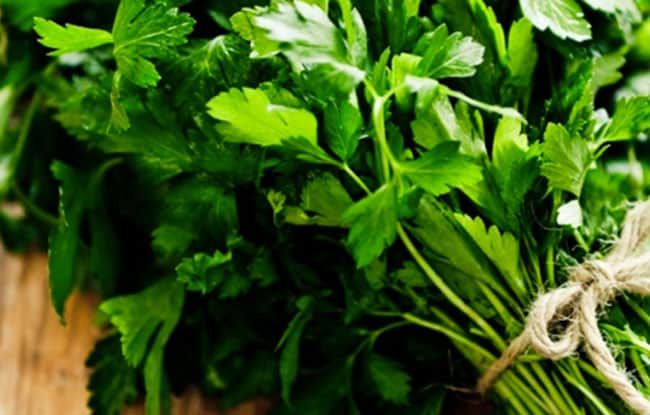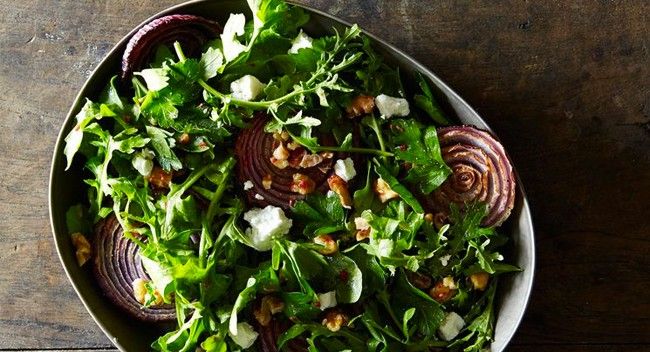
Greens – what’s not to love about them?! Not only are they packed with nutrients for a healthy glow but they’re also so versatile in the kitchen.
This won’t come as a shock but my favourite way to get my intake of greens is by having one of our Super Green Smoothies recipes. But I also use them in plenty of other dishes – aside from the normal stuff like salads and stir-fries, I add a variety of greens to casseroles, pasta and even soup. It’s the easiest way to consuming the recommended five servings of vegetables a day.
Here’s the lowdown on 10 of the best greens you can get your hands on:
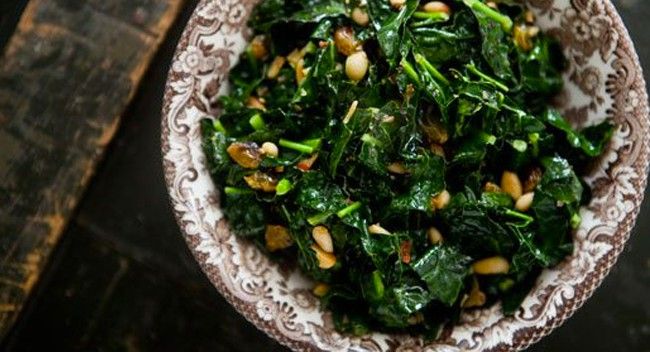
1. WATERCRESS
A recent study has suggested that watercress is in fact the most nutrient dense vegetable out there. It’s got basically every nutrient you can think of including potassium, fibre, protein, calcium, iron, folate, zinc, and vitamins A, B6, B12, C, D, E, and K. Talk about a nutrition packed punch! With its peppery flavour, garnish it on top of your favourite dish, pair it with quinoa or create a soup.
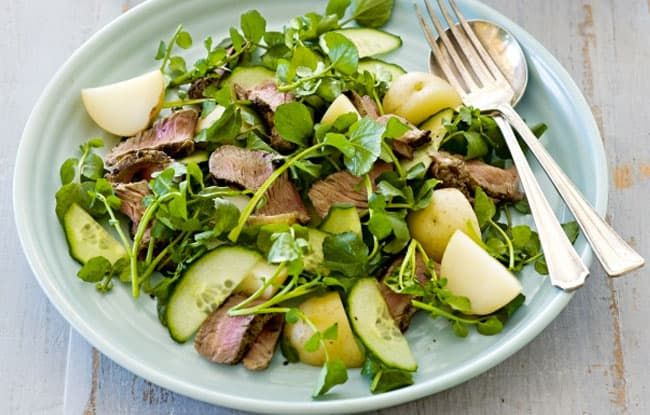
2. KALE
There’s a reason why this vegetable has a cult following! This nutrition powerhouse is an excellent source of vitamins A, C, and K with calcium, folate and potassium. Carotenoids and flavonoids are the specific types of antioxidants associated with many of the anti-cancer health benefits. Beyond antioxidants, the fibre content of kale binds bile acids and helps lower blood cholesterol levels and reduce the risk of heart disease, especially when it is cooked instead of raw. Pop it in a smoothie, bake some healthy kale chips, make a kale pesto or rub the leaves in tahini and cook it with garlic, olive oil and broth (make your own wonder broth with our recipe here).
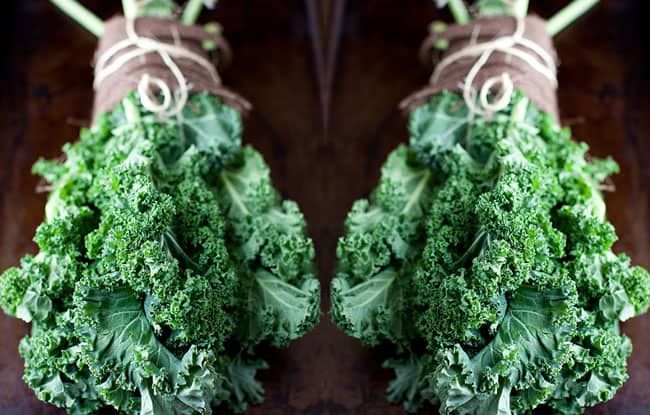
3. COLLARD GREENS
With a chewier texture and a stronger cabbage-like taste, this is one of the more under-appreciated green veggies. Popular with the raw food movement, it’s commonly used as a wrap instead of tortillas or bread. Collard greens are similar in nutrition to kale and cabbage and are laden with fibre which minimises the severity of LDL ‘bad’ cholesterol in blood.
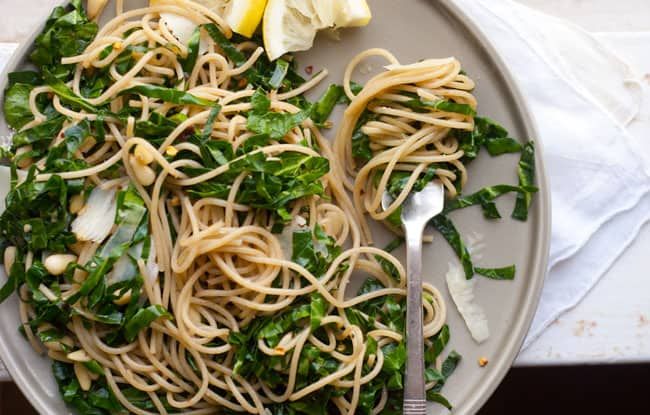
4. TURNIP GREENS
This sharp-flavoured veggie is low in calories and loaded with vitamins A, C and K, as well as calcium – excellent for healthy eyesight and strong bones. Traditionally cooked with pork and considered a delicacy, they’re more tender than other vegetables and need less cooking. When you’re buying turnip greens, choose ones with consistent colour, crisp leaves and slender stems.
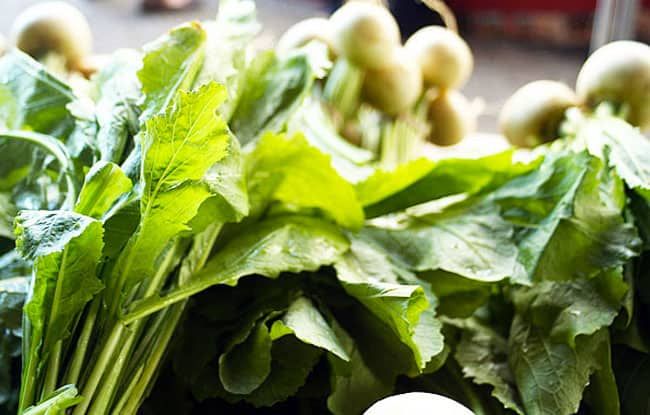
5. SWISS CHARD
With red stems, stalks, and veins on its leaves, Swiss chard has a beet-like taste and soft texture that’s perfect for sautéeing. Chard is full of antioxidants and an excellent source of calcium, vitamins A, C, and K. Presence of vitamin A along with vitamin C plays an important role in the production of collagen, promoting skin health and prevention of acne.
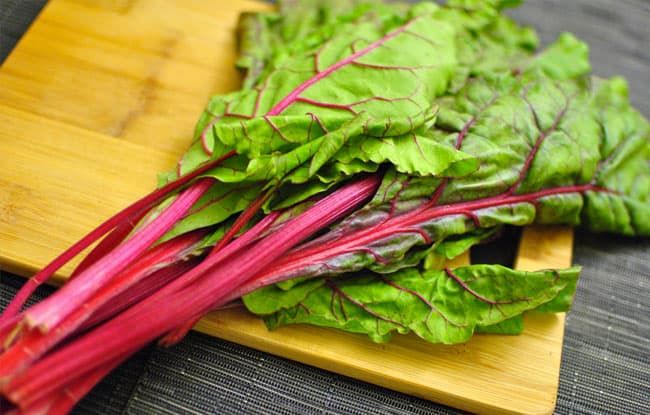
6. SPINACH
Spinach has a mere 20 calories per serving, and is packed with vitamins A and C and folate. Because heat reduces its oxalate content, freeing up its dietary calcium, cooked spinach gives you more nutrition than raw. Spinach leaves can be cooked quickly in the water that remains on them after rinsing. I add spinach to Super Green Smoothies, salads (obvs!), soups, pasta dishes, casseroles and well… basically anything!
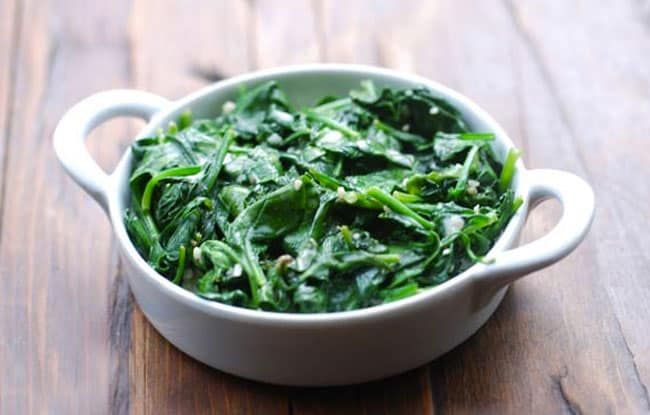
7. BROCCOLI
With 25 calories a serving, broccoli is rich in vitamin C and is also a good source of vitamin A, potassium, and folate. Broccoli is also high in fibre, which promotes digestion, prevents constipation, maintains low blood sugar, and helps curb overeating. Broccoli is best steamed or raw with a yoghurt-based dip. Its stalks and florets add both crunch and colour to stir-fries. I almost always add some to my green smoothies.
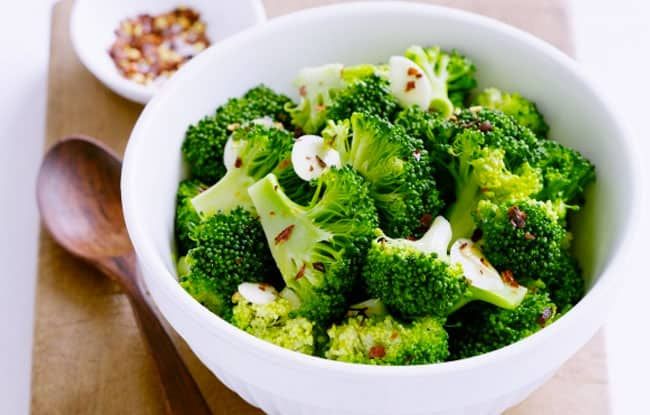
8. RED AND GREEN LEAF AND ROMAINE LETTUCE
A familiar sight in salad bowls, these lettuces are high in vitamin A and offer some folate. Leaf lettuces have a softer texture than romaine, a crunchy variety used in caesar salads. Fans of iceberg lettuce may go for romaine, a crispy green that’s better for you. The darker the lettuce leaf, the more nutrition it has, making red leaf slightly healthier than green but whatever your preference, you can’t really go wrong when eating your greens (or reds)!
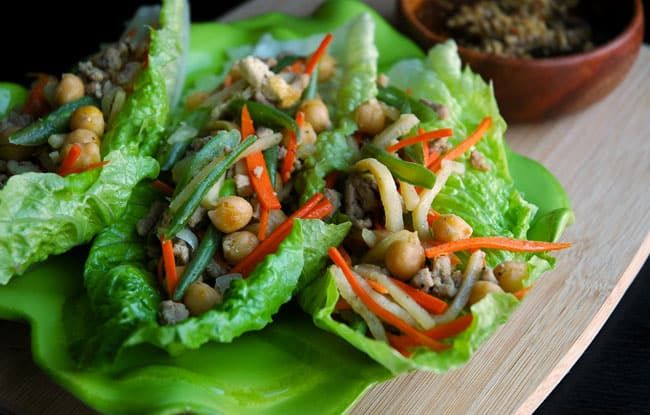
9. CABBAGE
Although paler in colour than other leafy greens, this cruciferous vegetable is a great source of fibre, potassium and vitamin C. Foods higher in fibre like cabbage are very cleansing and will fill you up faster, resulting in less overall calorie consumption. Available in red and green varieties, cabbage can be cooked, added raw to salads, tacos or stir-fries, shredded into a slaw, or made into sauerkraut.
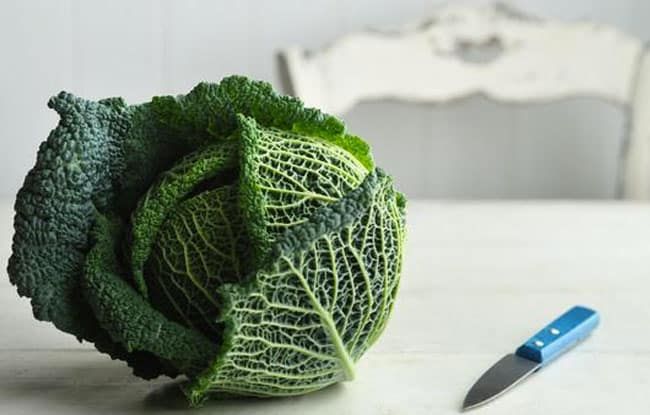
10. PARSLEY
Parsley is not only a delicious and vibrant tasting herb, but it has many healing properties. High in vitamins A, C, K and B12, it helps keep your immune system strong, helps to control blood pressure and flushes out excess fluid from the body, supporting kidney function.
